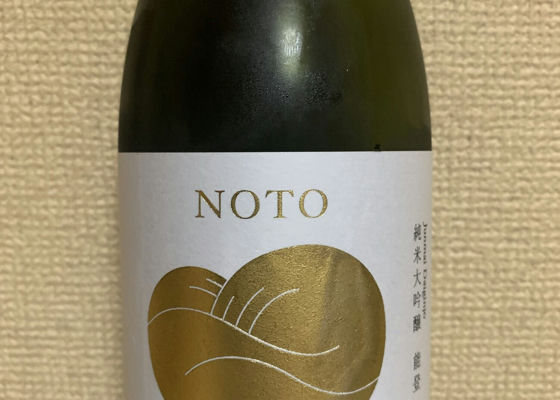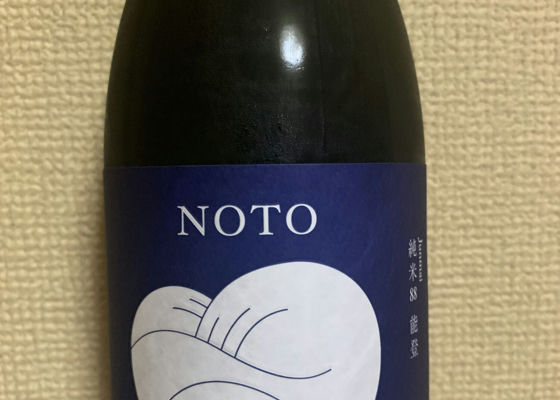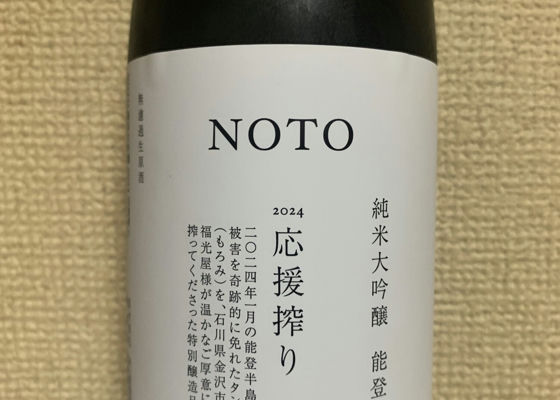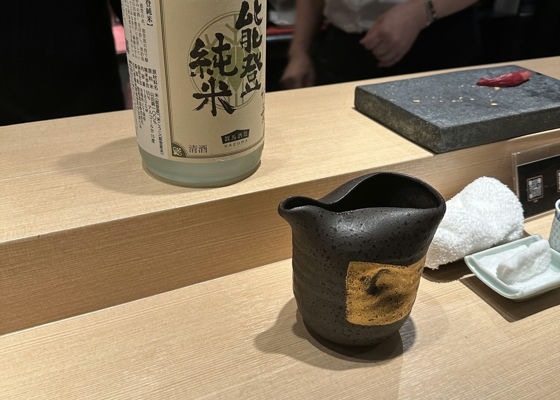
SakenowaRecord your sake experiences and discover your favorites
NOTONOTO
Flavor Chart®
A chart created from flavor analysis of user comments.

Similar Brands
We analyze the flavors based on everyone's comments and select similar brands.
Location
36 Ushitsu, Noto, Hōsu-gun, IshikawaOpen in Google Maps
Related Articles
数馬酒造×もつ吉×柴田屋酒店のコラボ企画!ブレンド日本酒を都内飲食店にて提供中 | 日本酒専門WEBメディア「SAKETIMES」
 数馬酒造株式会社(石川県鳳珠郡)、飲食店「もつ吉」を運営する株式会社リディファインダイニング(東京都港区)、株SAKETIMES | 日本酒をもっと知りたくなるWEBメディア
数馬酒造株式会社(石川県鳳珠郡)、飲食店「もつ吉」を運営する株式会社リディファインダイニング(東京都港区)、株SAKETIMES | 日本酒をもっと知りたくなるWEBメディア数馬酒造・鶴野酒造店・松波酒造、3蔵同時の酒蔵開きイベント「第4回 ぶらり酒蔵めぐり in 能登町」が6/8(土)に開催 | 日本酒専門WEBメディア「SAKETIMES」
 石川県・能登町にある3つの酒蔵(数馬酒造株式会社・鶴野酒造店・松波酒造株式会社)にて、3蔵同時開催の酒蔵開きイSAKETIMES | 日本酒をもっと知りたくなるWEBメディア
石川県・能登町にある3つの酒蔵(数馬酒造株式会社・鶴野酒造店・松波酒造株式会社)にて、3蔵同時開催の酒蔵開きイSAKETIMES | 日本酒をもっと知りたくなるWEBメディア【日本酒美女動画 vol.3 】少女から大人へ。日本酒 × 美女〜私を飲みに連れてって〜(数馬酒造編) - SAKETIMES
 こんにちは、SAKETIMES編集部、酒匠の山口奈緒子です。 SAKETIMESがお送りする美女動画、第3弾は数馬酒造編です! 「日本酒 × 美女〜私を飲みに連れてって♡〜」 今回SAKETIMES | 日本酒をもっと知りたくなるWEBメディア
こんにちは、SAKETIMES編集部、酒匠の山口奈緒子です。 SAKETIMESがお送りする美女動画、第3弾は数馬酒造編です! 「日本酒 × 美女〜私を飲みに連れてって♡〜」 今回SAKETIMES | 日本酒をもっと知りたくなるWEBメディアTimeline

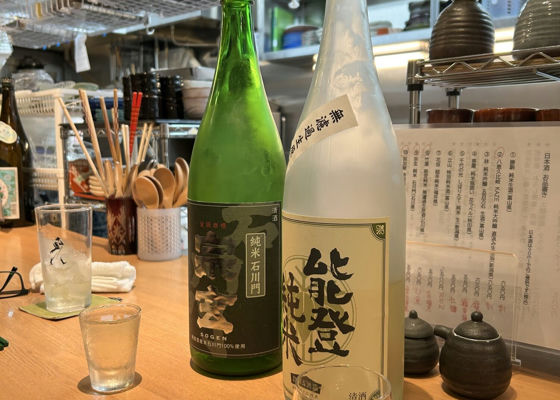


gk1
Purchased at KINMI Sake, which came up in the installations.
Dry fruity, strong taste, goes well with sashimi.
Delicious.
Japanese>English

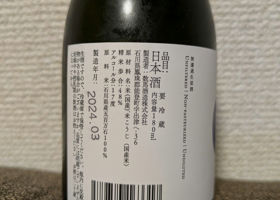
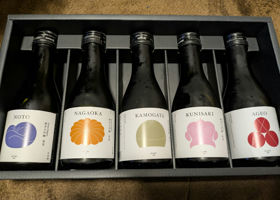
gk1
I bought a set of "KINMI Sake" after seeing it on Instagram.
It is dry, fruity, umami and rich.
Japanese>English
NOTONOTO プロトタイプ

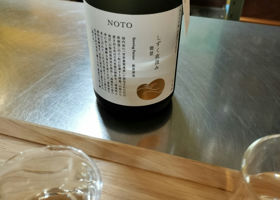
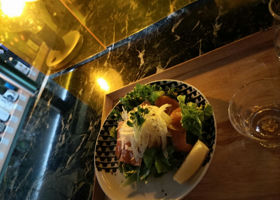
なおこ
They say it will help with reconstruction.
Japanese>English
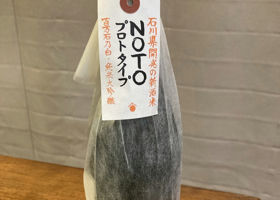
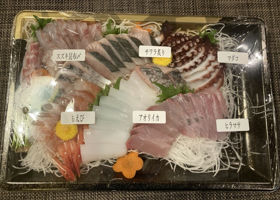
Joshua
I bought a Noto Support Set from KINMI, which is spending a lot of SNS advertising. This sake comes in a set with sashimi. It has a juicy and sweet taste and certainly goes well with sashimi. Made from 100% Noto-produced Hyakumangoku No Shiro. Polishing ratio 48%, alcohol content 16.5 degrees.
Japanese>English
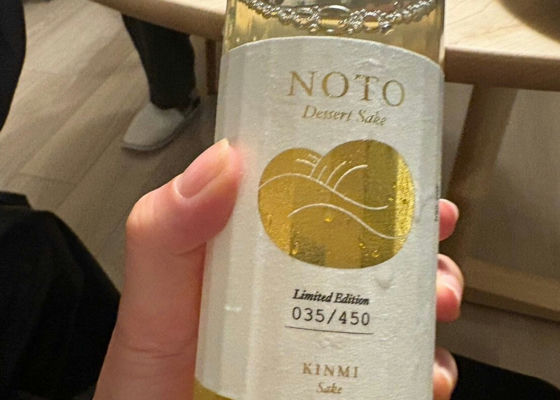
essa
Sweet sake, fruity and very tasty!
Japanese>English
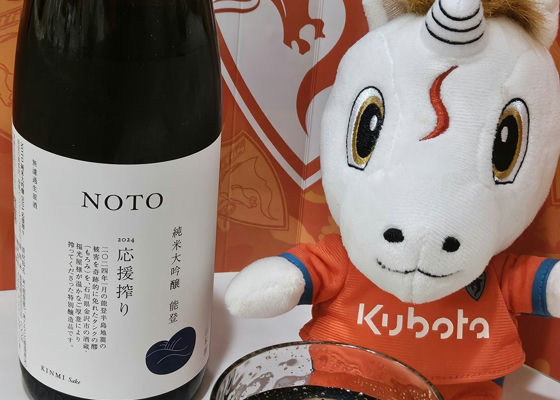
もんがむ
Made with Gohyakumangoku produced in Ishikawa Prefecture. Gorgeous melon aroma. The mouthfeel is smooth and crisp, but you can also taste a firm umami flavor.
Japanese>English
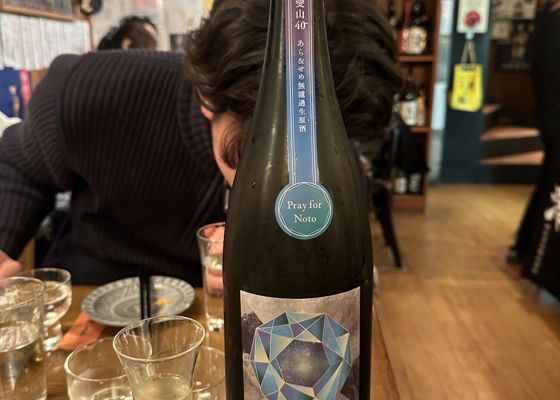
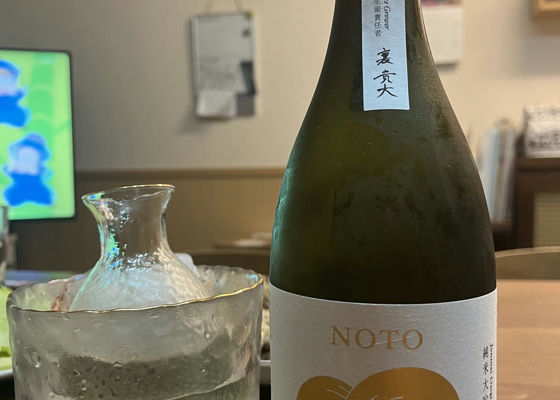
Tak
Moderately spicy, melon-like sweetness.
Japanese>English
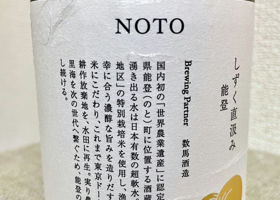
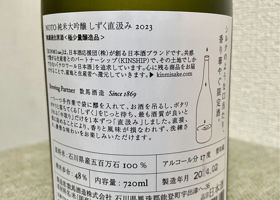
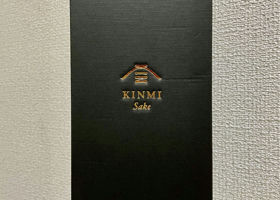
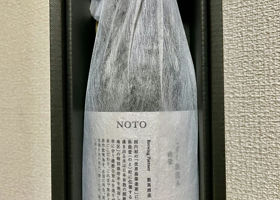
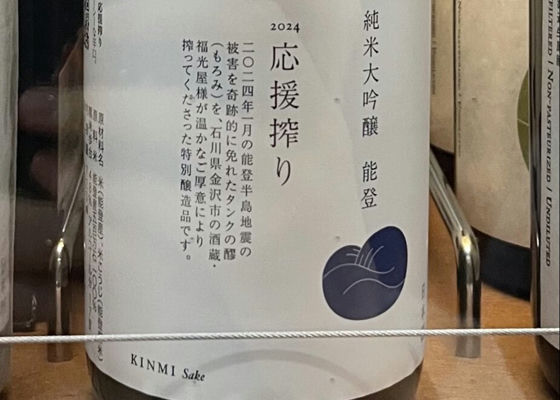
moF6IMlN2n
Mellow and juicy
Japanese>English
NOTO純米88 無濾過生原酒
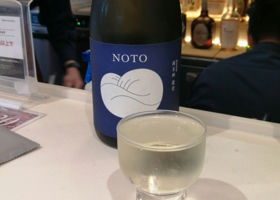

竹
Dare to say 88% rice polishing ratio. Amber body. The taste of grapes, like a noble rot wine, is a shock to the senses. The aroma spreads softly at the end of the bottle. Experimental and elegant.
Japanese>English

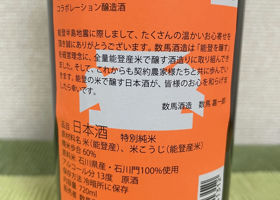
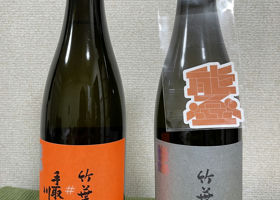
Dai
Makuake's Kurafan "Don't Stop #Noto's Sake!" The second bottle of returned goods: ☺️
This sake is made with rice "Ishikawamon" from Noto, which survived the disaster, and Kanazawa yeast grown in-house by Yoshida Sake Brewery, and is made with Yoshida Sake Brewery's specialty, low al at 13 degrees C. The sake has a fresh, gassy taste (at a cloudy white level when poured).
The sake has a fresh, gaseous taste (it is at the level of cloudy white when poured), and the flavor is refreshing, making it easy to drink. It is too good to waste, so I would like to taste it a little every day (^_^.)
We hope that the knowledge and techniques gained from this joint brewing and the new collaboration between sake breweries will help the affected breweries to rebuild their businesses as soon as possible.
Japanese>English
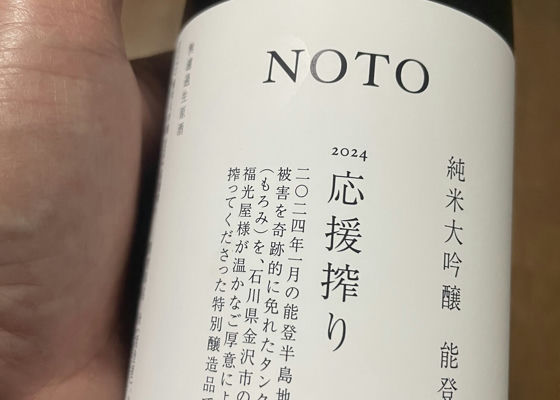
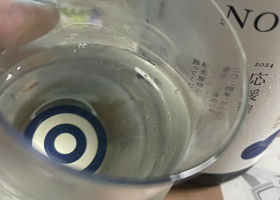
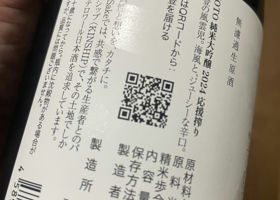
Tsukune
Rich from the aroma
Sweet but pungent.
Dark!
Beautiful amber color.
What should I drink it with?
I wonder what it should be paired with?
For now, tonight...
Curry rice crackers I had on hand.
NOTO Junmai Daiginjo
Ouen Pressing 2024
New Sake (Saved by Fukumitsuya)
Reconstruction support goods
Junmai Daiginjyo freshly pressed sake made from the mash that was rescued by Fukumitsuya.
Japanese>English
